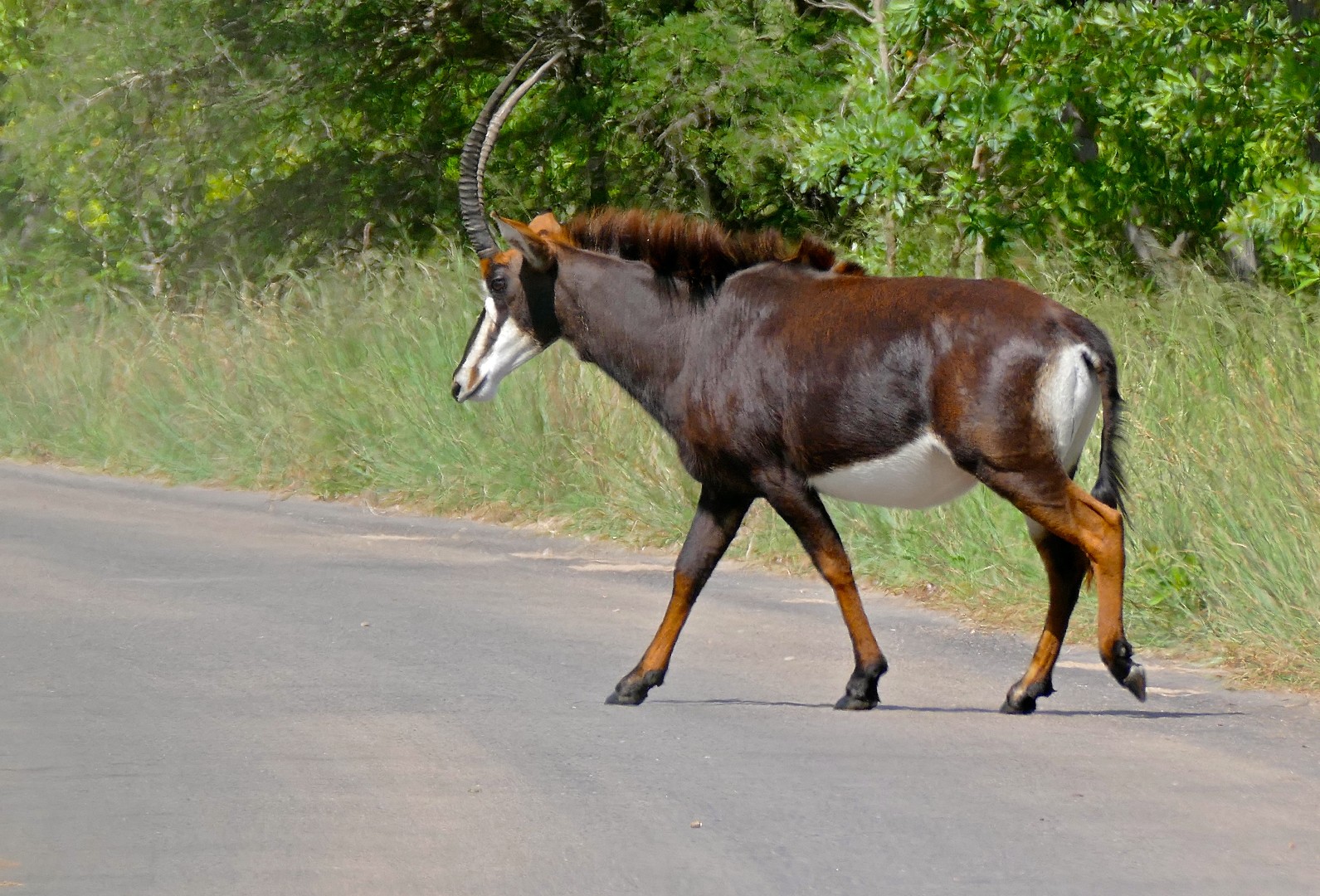Sable antelope
A species of Hippotragus Scientific name : Hippotragus niger Genus : Hippotragus
Sable antelope, A species of Hippotragus
Scientific name: Hippotragus niger
Genus: Hippotragus
Content
Description General Info
 Photo By Bernard DUPONT , used under CC-BY-SA-2.0 /Cropped and compressed from original
Photo By Bernard DUPONT , used under CC-BY-SA-2.0 /Cropped and compressed from original Description
Both sexes have horns, which can reach 1.5 meters in length. Males and females are very similar in appearance until they reach three years of age, when the males become darker and develop majestic horns. The male antelope weighs an average of 238 kg (525 lb) with a height of 116–142 cm (46–56 in). Females weigh 220 kg and are slightly shorter than males. The horns are massive and more curved in males, reaching lengths of 81–165 cm (32–65 in), while females' horns are only 61–102 cm (24–40 in) in length. Coloration in bulls is black, while females and young are chestnut, except in southern populations, where females turn brown-black. Most sable antelopes have white "eyebrows", their rostra are sectioned into cheek stripes, and their bellies and rump patches are white. Young under two months old typically are light brown and have slight markings. 
General Info
Lifespan
18-23 years
Diet
Sable antelope, commonly known as the Sable Antelope, primarily subsists on a diet of grasses. Its foraging activity commonly involves selection of specific grass species, with preference given to shorter, fresh green shoots.
Appearance
The sable antelope is a robust, medium-sized antelope with a sleek coat that ranges from dark brown to black. Males, much larger and darker than females, have impressive, long, ringed horns. The species is distinguishable by its white belly and a distinctive facial pattern with white markings around the eyes and mouth. Juveniles mimic a lighter version of their parents, only growing their full coloration with age.
Behavior
Sable antelope is a highly territorial and largely solitary ungulate. Primarily nocturnal, it spends its days resting and ruminating, with activity peaking at dawn and dusk. Marking territory with preorbital gland secretions, males display unique 'roaring' behavior in confrontations. Their survival is enhanced by their excellent camouflage and acute senses.
Population
Stable